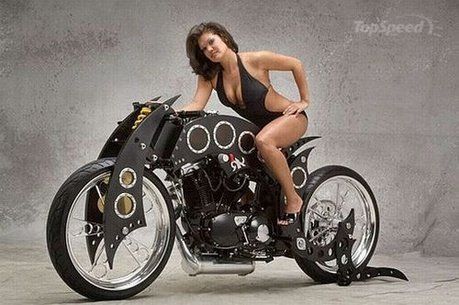 As regular readers of the Vintagent know, I have a 'thing' for unusual bikes, and a special place in my Pantheon for the Majestic motorcycle from France. I've already given several expository posts on the subject, which you can read here, but here in Bavaria, where all motorcycles seem possible to ride, a freshly restored 1929 Majestic with a 500cc ohv Chaise engine was proffered. My visit marked the premier startign event for this bike, and as the film below shows, the mechanicién knew his stuff:
As regular readers of the Vintagent know, I have a 'thing' for unusual bikes, and a special place in my Pantheon for the Majestic motorcycle from France. I've already given several expository posts on the subject, which you can read here, but here in Bavaria, where all motorcycles seem possible to ride, a freshly restored 1929 Majestic with a 500cc ohv Chaise engine was proffered. My visit marked the premier startign event for this bike, and as the film below shows, the mechanicién knew his stuff:The Majestic is the physical embodiment of the Art Deco aesthetic, a streamlined torpedo which suggests Speed and Modernity, and although it fails to deliver in the former case, it was certainly and extremely forward-thinking design, an attempt at an 'ideal' motorcycle, whose formula has been echoed through the decades by modern factories such as Yamaha and Bimota.

Structurally, the 'New Motorcycle' (as it was called in prototype form) is built similar to an automobile of the era, with 'C' section steel channels forming the chassis in twin, low rails along either side of the power train, atop which is a shapely light-guage steel body of attractive and curvaceous line. Classic Deco stuff. The engine compartment is covered in a mesh, and the body is louvered along the sides to dispense with heat.

The true innovation comes with the hub-center steering, not unique, nor was Majestic the first two-wheeler to use such, but the execution is modern and works well. Suspension, as on a Morgan car, is via sliding pillars along either side of the front wheel - the rear is rigid. Conventional controls operate the machine, including a hand-shifter, which is a simple rotary device with a knob - no 'gate' for holding the lever in place, just a round boss with Roman numerals indicating the gear (there are III). Steering is via normal handlebar with a push-pull rod connected to the front hub.

So, the important question; what is it like to ride? Sitting astride the machine there is no sense of anything unusual, that one is atop a totally enclosed vehicle with hub-center steering, only the handlebars and extensive (smart too) instrument panel can be seen from the perch. Starting the Chaise engine is a doddle, and a typical 20's bonk emerges from the fishtail muffler. There is valve clatter below the perforated engine covering. So far, so normal.

Moving out, the steering is very light, and has no inertial sluggishness for such a long machine. As the speed rises, one notices a certain pendulum effect at the front wheel, and a light hand is required on the 'bars to prevent a weave. Even with a delicate touch, the front wheel seems, not hunting exactly, but not rail-like in steering - constant minor correction is necessary to keep the plot moving in exactly the right direction. I imagine that a little work perfecting the trail of the steering geometry would cure this minor effect; it's a very small matter for such a radical design, and the road-holding and steering feel true at all times and perfectly stable and safe. As the engine warmed up, I felt completely confident in swift cornering, and was rewarded with a very nice ride with zero drama.

What I wanted, though, was a different engine. The Chaise unit is, I'm sure, perfectly serviceable and totally conventional for the time, but such an innovative motorcycle cries out for a smooth and modern engine, with significant power output. A prototype of a 'New Motorcycle' with a Cleveland four-cylinder engine was shown at the 1928 Paris Motorcycle Show; this would have been a perfect combination of power and engine noise. Unfortunately, the prototype seems to have disappeared, so we'll have to settle for the 'what if'.




























